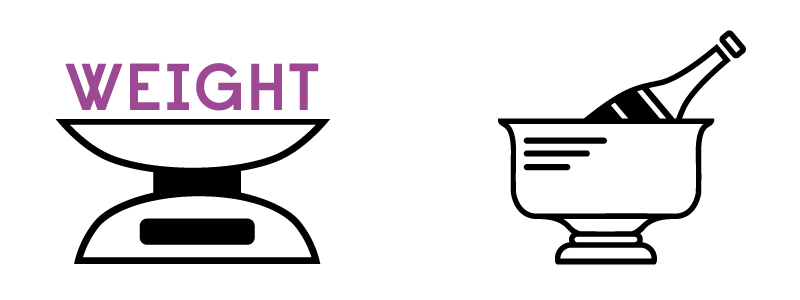One of the primary ways to analyze and talk about wine is by discussing a wine’s body. While as upstanding ladies and gentlemen we’d normally never talk about someone’s body, in wine talking about body is not a discussion of shapeliness, but instead an analysis of the way a wine feels inside our mouth.
Wine Body Definition: In wine talking about body is not a discussion of shapeliness, but instead an analysis of the way a wine feels inside our mouth.
Wine body breaks down into three categories: light body, medium body and full body, and a good way to think about the difference between them is the way skim milk, whole milk and cream feel in your mouth.
While there are many factors that can contribute to a wine’s body, the main factor is alcohol. Because of this, knowing the influence alcohol has on the body of a wine is a good trick to help you quickly know what category of body the wine you are drinking will fall under.
The reason alcohol is the main contributor to a wine’s body is because alcohol is what gives a wine its viscosity and is responsible for either the heavy or light mouthfeel we experience when we sip a wine. Viscosity is that term we learned in high school science, which is used to define a liquid in terms of how easily it responds to stress (e.g., water is less viscous than honey because it has less weight and moves more easily).
 Alcohol is what gives a wine its viscosity and is responsible for either the heavy or light mouthfeel we experience when we sip a wine.
Alcohol is what gives a wine its viscosity and is responsible for either the heavy or light mouthfeel we experience when we sip a wine.As a wine contains more and more alcohol, it becomes more viscous (i.e., it becomes heavier, and thereby feels fuller in our mouths). This is why we call a heavily viscous wine full-bodied and a low viscosity wine light-bodied.
Here are the general rules:
Wines Under 12.5% alcohol (the alcohol percentage should always be written on the wine’s label) are said to light-bodied. These are generally the white wines we think of as crisp and refreshing. Good examples of these wines are Riesling, Italian Prosecco and Vinho Verde.
Wines between 12.5% and 13.5% are considered medium-bodied. Good examples of these wines are Rose, French Burgundy, Pinot Grigio and Sauvignon Blanc.
Finally, any wine over 13.5% alcohol is considered full-bodied. Some wines that are normally over this alcohol level and considered full-bodied are Zinfandel, Syrah/Shiraz, Cabernet, Merlot and Malbec. While the majority of wines over 13.5% alcohol are usually red, Chardonnay is a great example of a white that often can also be considered full-bodied.
